The Statues of Liberty by Auguste Bartholdi
New York + Buenos Aires + Paris + Bordeaux + Washington
The Statue of Liberty is that huge bronze statue that dominates the mouth of the Hudson River and is located south of Manhattan. It was a good gift that the French people made in 1886, to the American people to commemorate the Declaration of Independence of the United States of 1776
The First: New York City – 1886
The French sculptor Frédéric Auguste Bartholdi was in charge of designing it and carrying out its construction. The engineer Gustave Eiffel, whom we all know from the tower that bears his name, was working on this project; specifically manufacturing the internal structure.
The Statue of Liberty was established as a United States National Monument in 1924 and its maintenance is under the responsibility of the National Park Service. Its height is 310 feet and it weighs 225 tons. In 1984 UNESCO declared it a World Heritage Site
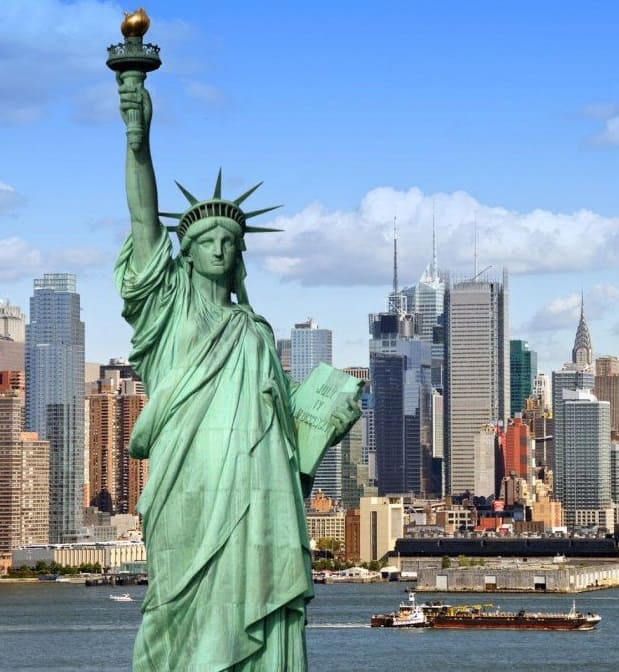
The staircase leading to the head has 354 steps. The crown has 7 peaks representing the 7 seas and this option was chosen before the classic Phrygian hat with which freedom is usually represented.
The board in his left hand is engraved with the date of North American Independence July IV MDCCLXXVI. At its base is a bronze plaque with the stanzas of a poem by the American poet Emma Lazarus, placed in 1903, where she declares this “powerful woman with a torch … the Mother of the exiles …” since the immigrants who arrived at New York, the first thing they saw was this statue, and in which they hoped.
But it turns out that there are three statues of liberty made by the same sculptor, identical to the one in NYC, but smaller in size.
Statue of Liberty Patent
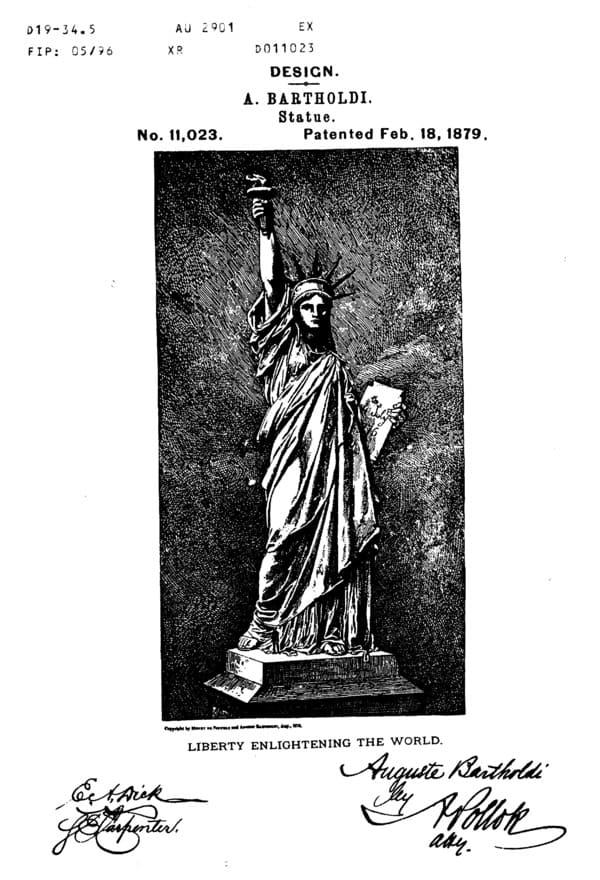
On February 18, 1879, Bartholdi obtained the patent for the monument in the United States, USD11023S. This patent described it in the following terms:
“… a statue representing Liberty that illuminates the world, which consists, essentially, of a covered female figure, with one arm raised, holding a torch, and while the other holds an inscribed plaque, and has on his head a diadem, …
“
Samsung Store: Galaxy Z Fold4 Series

Replica: Washington 2021
A small-scale replica of the Statue of Liberty, made in 2011 in Paris, is located in the gardens of the French Embassy in the United States, in Washington ( Near Lincoln Memorial). It was inaugurated on July 14, 2021, the national holiday of France. He will remain there for the next ten years, until 2031.
In July 2021, the Statue of Liberty was exposed on Ellis Island (New York City) in front of the original statue, in an initiative to celebrate the 135th anniversary of its inauguration.
In 1886 France gave the United States the sculpture called “Liberty Enlightening the World“, made by the sculptor Frédéric Bartholdi, to honor the first centenary of North American independence.
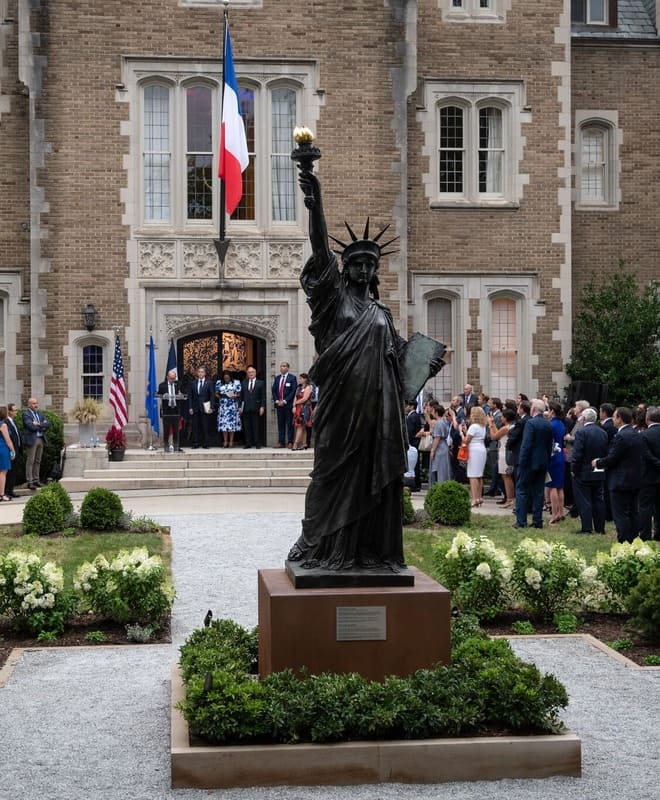
During the creation process, Bartholdi used several small-scale prototypes to work with the proportions of the final work, 150 feet. One of those small statues that he made in plaster in 1876 (eight years before reaching the final model) has been kept at the National Conservatory of Arts and Crafts in Paris (Conservatoire National des Arts et Métiers CNAM) since 1906.
In 2011 a foundry specialized in replicating works of art, the Fondérie Susse Art, used it to make another reproduction in bronze.
Ile des Cygnes – Sena River – Paris – France – 1898
One is located next to the Pont de Grenelle and at one end of the Ile des Cygnes (Swan Island) on the Seine river, in Paris – France. In reality, the Paris Statue of Liberty is an exact, smaller reproduction of the other; It is made of bronze and is at the end of the Ile des Cygnes.
It is 38 feet high and was a gift from the United States to the city of Paris on the occasion of the Universal Exhibition of 1898. In 1937 its position was modified, turning it to the west, so that it looked towards its monumental sister in New York.
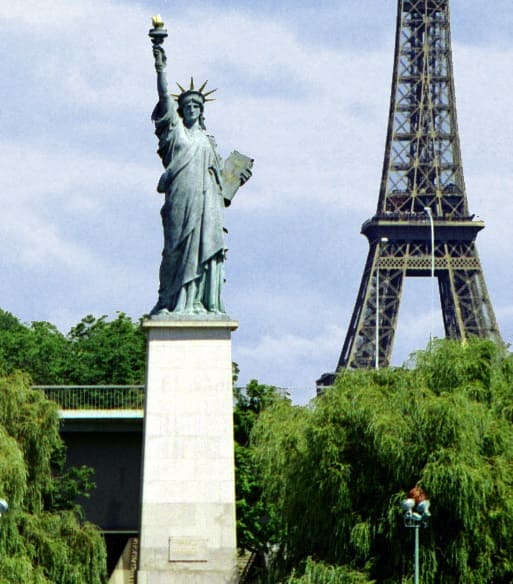
Luxembourg Palace Gardens – Paris – France – 1906
Another smaller one is in the Luxembourg Palace Gardens, Paris France. This Statue of Liberty in the Luxembourg Gardens has the originality of being one of the sketches that Auguste Bartholdi made to serve as an image of the great statue that is in Manhattan.
On the occasion of the Universal Exposition held in Paris in 1900, Bartholdi himself gave the city of Paris this statue, which was not placed in its current place until six years later in 1906. Bartholdi had died two years earlier.
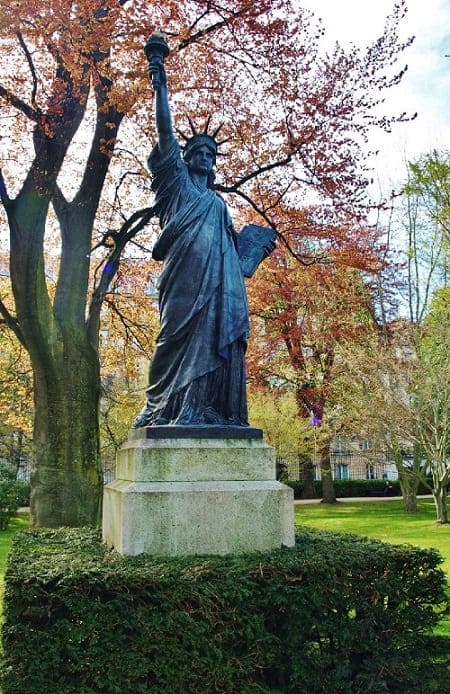
This statue is located at a crossroads very close to the fence that separates the gardens from Rue Guynemer. The oak that gives it shade was planted by the President of the French Senate, M. Christian Planchelet and by Howard Leach, American ambassador to France. This oak was planted to remember the victims of the terrorist attacks of September 11, 2001 in the United States.
This statue is a replica of the original that is now in the Musée d’Orsay
Statue of Liberty at the Musée d’Orsay – Paris
Located today in the Musée d’Orsay, this statue is one of the first to be cast in the same mold as the one used for the original model. It is the same size, just under 30 feet tall, and was commissioned by Bartholdi himself in 1889, then exhibited in 1900 at the World’s Fair in Paris.
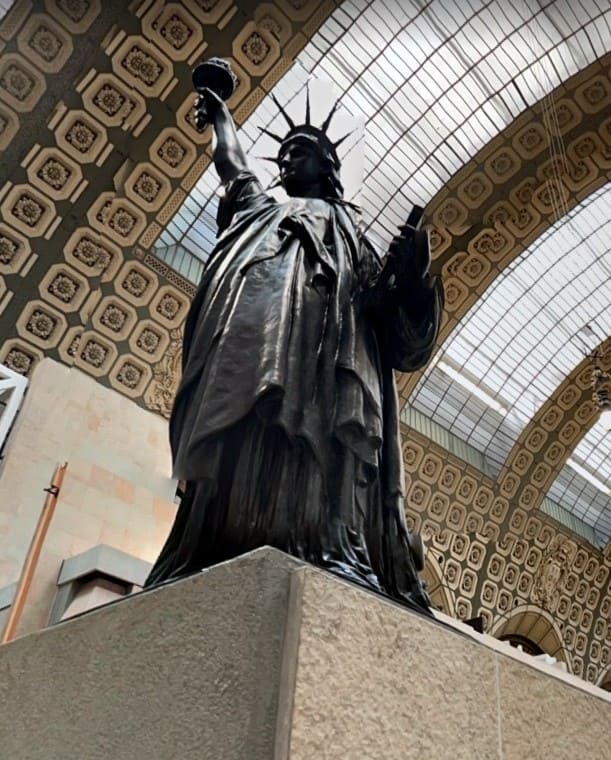
This Statue of Liberty was Bartholdi’s personal property. On the death of the artist, it was donated in 1906 by his widow to the Luxembourg Museum, who installed it for a long time in her gardens. Recently, being damaged, it was transferred to the Musée du Quai d’Orsay and was replaced by another, more recent, identical statue in the Luxembourg Gardens.
Original Statue of Liberty (CNAM)- Paris – France
This Statue of Liberty is the only one that is not a replica of the Statue of Liberty, since this is the original model of the sculptor Auguste Bartholdi. The artist first made this statue, which is called the original statue, and featured it throughout his project. When he was able to start the work, he used it to make a model enlarged four times larger, and it is this model that has been enlarged four times larger to arrive at the New York statue.
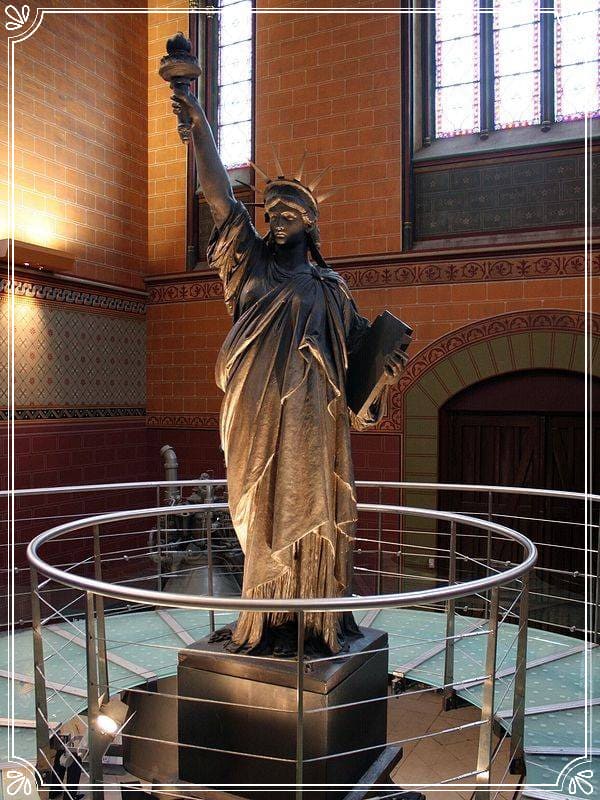
Everything about this statue, very well exposed, is in the Museum of Arts and Crafts in Paris, which can be considered the original model. National Conservatory of Arts and Crafts in Paris (Conservatoire National des Arts et Métiers CNAM)
Buenos Aires – Argentina, 1886
The last statue of liberty of Bartholdi is in Argentina, more precisely in the city of Buenos Aires. It is located on a traditional promenade in the Barrancas de Belgrano neighborhood. On the corner of La Pampa and Arribeños streets. The material of this statue is cast iron received in copper. Its height is 10 feet
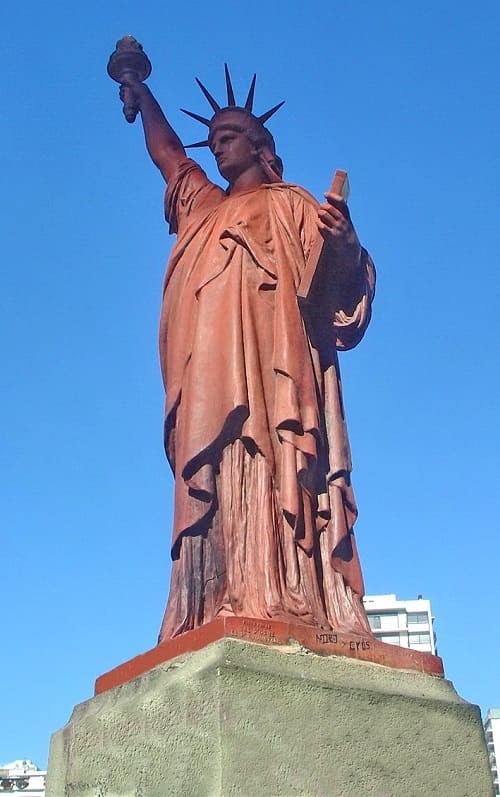
It was made by Bartholdi himself, it was inaugurated on 1886, by President Julio Argentino Roca, who was to deliver the presidential band to his successor Miguel Juárez Celman nine days later. At the foot of the statue you can verify the signature of its author, A. Bartholdi, and the legend Fonderie d’art du Val d’Osne. 68, 8 rue Voltaire, Paris.
Bordeaux – France, 1888
Located in Place Picard, Bordeaux – France. This statue was offered by Bartholdi himself in 1888. It was inaugurated on April 28, 1888. But since it was in bronze, it was destroyed by the Germans in 1943, interested in the metal as much as in the suppression of this symbol of freedom.
Bartholdi’s donation to the city followed the abandonment of his project to install a hemicycle fountain. He won first prize for this project, but his cost was over budget and the work never got done. In compensation, Bartholdi offered the city a replica of his statue, unveiled two years earlier in New York.
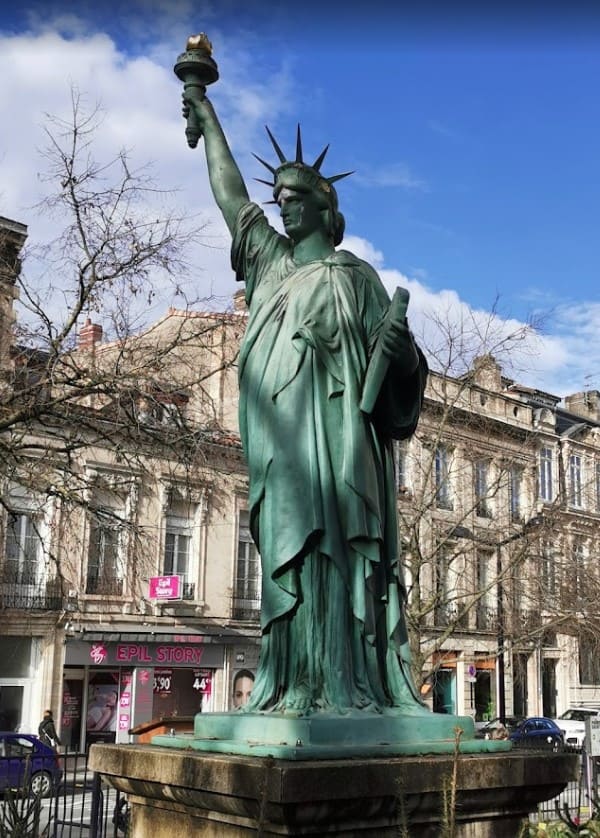
Decades after its disappearance at the hands of the Nazis, the inhabitants of Bordeaux erected a new Statue of Liberty in its place in 2000 and, after the attacks of September 11, 2001, dedicated the statue to the memory of the victims. .
In 2012, Bordeaux’s Statue of Liberty was removed during renovations to the square and put back in place immediately after.
Design History of the Statue of Liberty
During a visit to Egypt, Bartholdi imagined a large lighthouse, to be found at the entrance to the Suez Canal, which would mark the routes. The lighthouse was devised as the classic-looking image of the goddess Libertas from Roman mythology, divinity of liberty. It was designed so that the headlight light would shine through a bandage placed around the top. The idea also arose of a torch held in the air, towards the sky.

Bartholdi presented the project to the Ismail Pachá Jedi in 1867 and again in 1869, but the project was never approved. The drawings for the project entitled “Egypt Brings Light to Asia” closely resemble the Statue of Liberty. Bartholdi assured that the New York monument was not a reuse, but an absolutely original work.
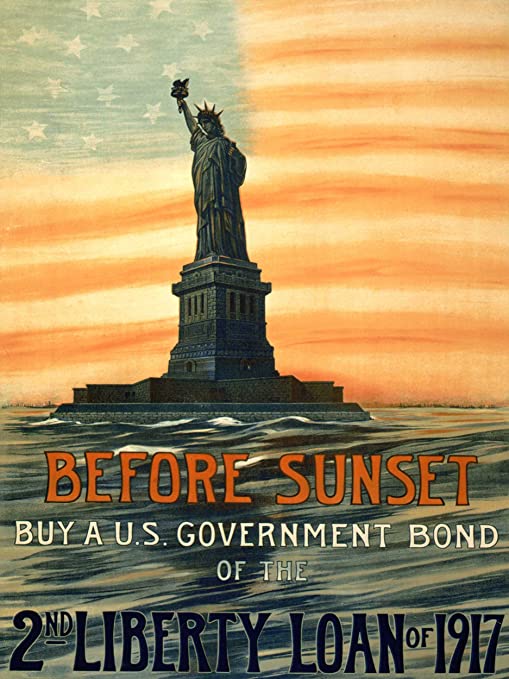
Related Post
- National Park Service Official Site
- TSA Medication
- Yellowstone National Park
- Travel gadgets for outdoors
- Camping Gear
- Digital Paper
- TSA liquids










